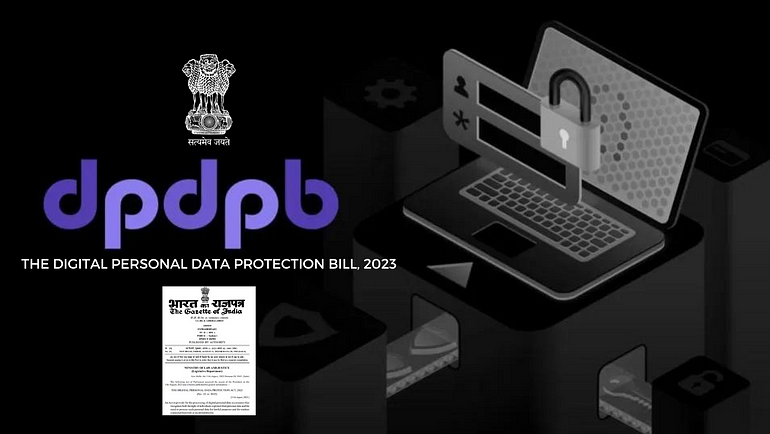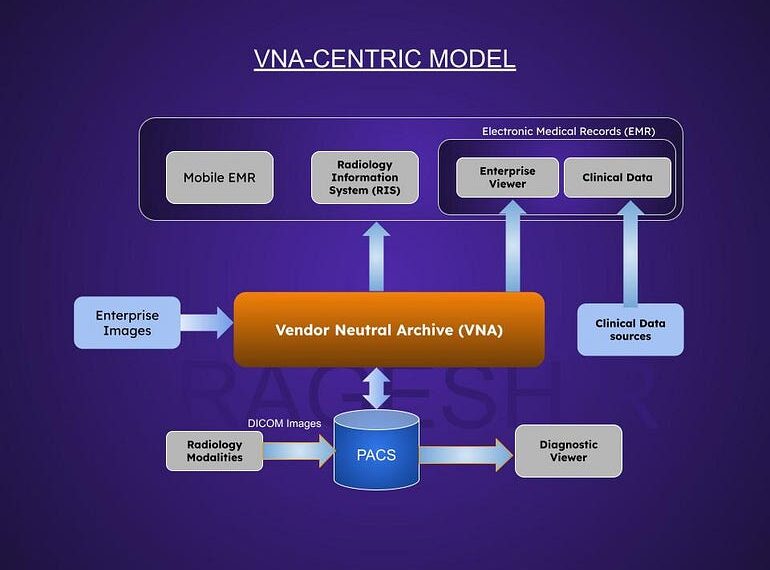Clinical coding and the role of SNOMED-CT

What is Clinical Coding?
We have all heard of software coding. However, you may be wondering what role coding plays in healthcare. Simply put, clinical coding is a healthcare management function that involves translation of written clinical statements into code form. This coding system helps physicians to draft clinical documents in a standard format so that it can be utilized for a variety of purposes. There are several coding standards available in clinical coding such as ICD-International Classification of Diseases medical code manual published by the World Health Organization, ICD-9,ICD-10 CM ,ICD-10 PCS,SNOMED-CT,CPT,HCPCS etc.
Why is clinical coding important?
One of the main reasons for the development of controlled clinical terminology is the need for meaningful representation of clinical information in electronic medical records. Electronic medical records have improved the availability of communication as well as related information. But they are only a partial solution. The real challenge is to make these records meaningful so that key facts can be identified from the masses of data. Meaningful records enable effective semantic-based searches and link EHR information to relevant clinical knowledge.

Which coding system is the best ?
It would be irrelevant to ask which coding system is the best as each one serves a different purpose . For example, to impart effective therapy, it is important to understand the relationship between diagnosis, responsible pathogens (e.g. virus/bacteria) and the affected organism. In the case of coding systems, the ones like ICD are designed to classify and categorize diseases while systems like SNOMED-CT focus on the concept and its relationship to other relevant components such as affected organs, pathogens, drugs etc.
Many of us may try to relate SNOMED-CT with the International Classification of Diseases ICD-9 and ICD-10, ICD-9-CM and ICD-10-CM. These classifications are essential to the overall picture of healthcare delivery as they group ideas in ways that allow aggregation and statistical analysis. However, looking at classification alone would be limiting to individual patient medical records as they represent only one dimension of the meanings.
For example, let’s look at how the ICD-10 describes viral pneumonia. It is given by the code J12 or J12.9, which classifies it as a respiratory disease, but not a viral disease. But in reality, viral pneumonia is both a viral disease and a respiratory disease. Another limitation of the classification is that they do not relate clinical conditions to the body sites where they occur or the causes of those clinical conditions. The viral pneumonia codes like J12 or J12.9 are not associated with lungs in the coding system.
Meanwhile, in contrast, a key feature of SNOMED CT is that the meaning of information recorded in electronic records using SNOMED CT concepts is computer-processable. This is possible because each coded concept is linked to other concepts to which it is logically related. SNOMED CT is designed to present clinical information in a meaningful way and when used with a well-designed electronic medical record, achieves that goal
What are Clinical Ideas?
They are diseases, organisms, surgeries, procedures, devices, medicines, body parts and anything you want in your medical record. Everyone involved in healthcare is working with a clinical idea. Recognizing, manipulating, and connecting clinical ideas constitute an important part of any clinical practice. Knowledge growth requires the ability to develop, express, share, test, and use new clinical ideas in care. Effective delivery of quality care requires the application of these clinical ideas in ways that improve the quality of individual patient care, promote the growth of clinical knowledge, aid and inform future patient care and most importantly globally shareable. From a business point of view, exchanging these clinical ideas would avoid contractual or proprietary errors as they ensure transparency as well as enable dissemination of knowledge. They thus pave a way to materialize these clinical ideas to a practical reality. So how you express your ideas, how you share and put it across people are key factors in making these things possible.
It is necessary that clinical ideas are shared with the world. You have to share knowledge to receive information from others.Patients can be treated better as a team by involving many specialists and through exchange of information rather than treating them as the sole patient of a physician. SNOMED CT really helps to solve the problem of recording, capturing, and sharing clinical ideas in a way that helps provide effective, quality healthcare. It provides a background for why we think.
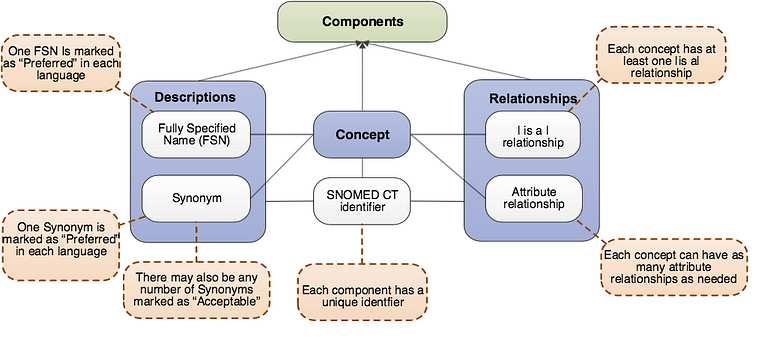
Why Clinical ideas are important?
A clinical idea is the essence of what you actually want to document about a person’s health. Clinical ideas include everything that we, as individuals or as a society, think we know about health, disease, prevention, investigation, and treatment based on research, experience, epidemiology, etc. Clinical ideas are the building blocks of electronic health records and even paper records. Therefore, when recording personal health details, there is a need to actually store information, research, and epidemiology in a way that can be used both for the benefit of individual patients and for the benefit of others. If we cannot exchange and connect clinical ideas that we understand with inputs and outputs from others, the it would be impossible to deliver care as a team.
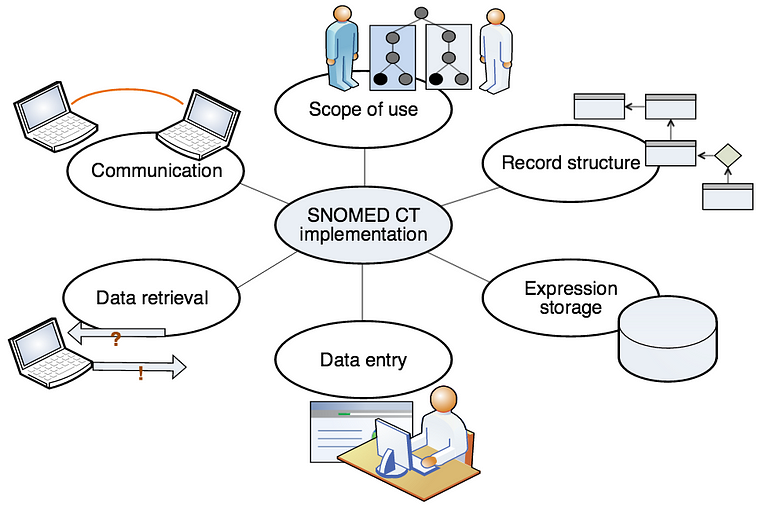
Hierarchy and Relationship
A simple hierarchy is a tree, where large branches originate from a source and smaller branches originate from a larger branch. In a hierarchy, each node has a parent node and each of these parent nodes should have only one parent node. In a simple hierarchical tree of the given format, a parent can have many children, but a node cannot have multiple parents. The relationship between clinical concepts is more complicated than that.
For example, in the case of ear infection, otitis media suppurativa is both an ear disease and an infection. However, ear diseases and infections are separate node-specific branches in a simple hierarchy. Inorder to rectify that, we need a polyhierarchy that allows ideas to be related to multiple parent ideas. Of course, you can’t just use codes to represent multiple hierarchies. In practice, you should use explicit relationships that don’t depend on strings as part of your code.
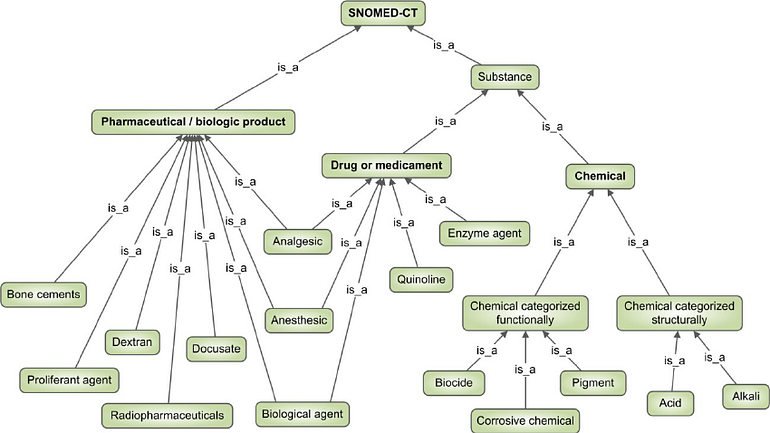
What is Polyhierarchy in SNOMED-CT?
Polyhierarchy in SNOMED CT, SNOMED CT supports the representation of other relationships known as attribute relationships. Attribute relationships represent differences between concepts and their hierarchical parents.
For example, otitis media suppurativa has a bacterial causative agent and is seen in the middle ear. On the other hand, bilateral suppurative otitis media is also caused by bacteria, but unlike suppurative otitis media, the sites are clearly indicated to be the left and right ears. That’s how they attribute relationships differentiate associative details.

Why is SNOMED CT more than just a coding diagnostic system.?
SNOMED CT also includes other types of clinical findings, such as signs and symptoms.This includes tens of thousands of surgical, therapeutic, diagnostic procedures and contains observations such as heart rate. SNOMED CT includes concepts representing body structures, organisms, substances, drugs, physical objects, physical forces, specimens, and many other types of information that need to be tracked as part of the medical record. The SNOMED CT’s comprehensive range reduces the need to support multiple incompatible or duplicate code systems in the same patient record system. This means that SNOMED CT will become a common language for consistent communication, retrieval, and processing across clinical specialties and across medical institutions at local, national, and international levels.
Implementation approaches of SNOMED-CT clinical coding with an EHR or HIS application
There are many possible implementation strategies for implementing SNOMED CT Expression Constraints, some of which depend on the substrate’s storage format. For example:
- It stores SNOMED CT in a relational database and translates each SNOMED CT expression constraint into one or more SQL statements.
- It stores SNOMED CT in an RDF store and translates constraints for each SNOMED CT expression into SPARQL queries.
- It saves SNOMED CT to an XML database and translates each SNOMED CT expression constraint into one or more XQL statements.
- Write a custom query execution engine (such as in Java or C++) to return matching concepts or expressions.
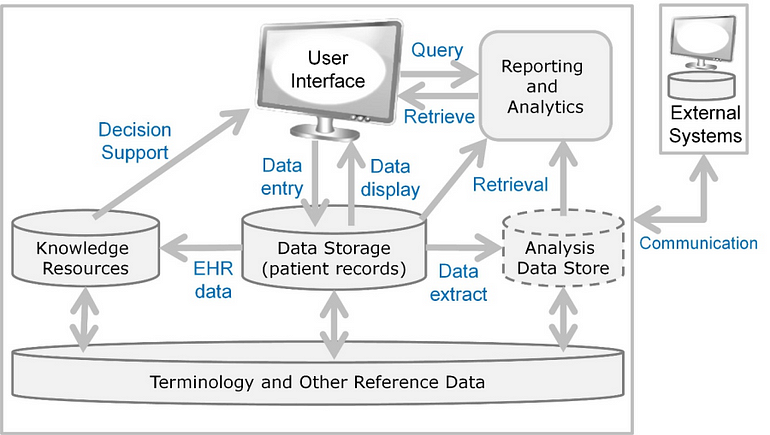


Author –Ragesh R
IT professional specialized in healthcare technologies with over two decades of experience. He also has a fondness for photography, traveling, designing, painting, and sharing knowledge.

